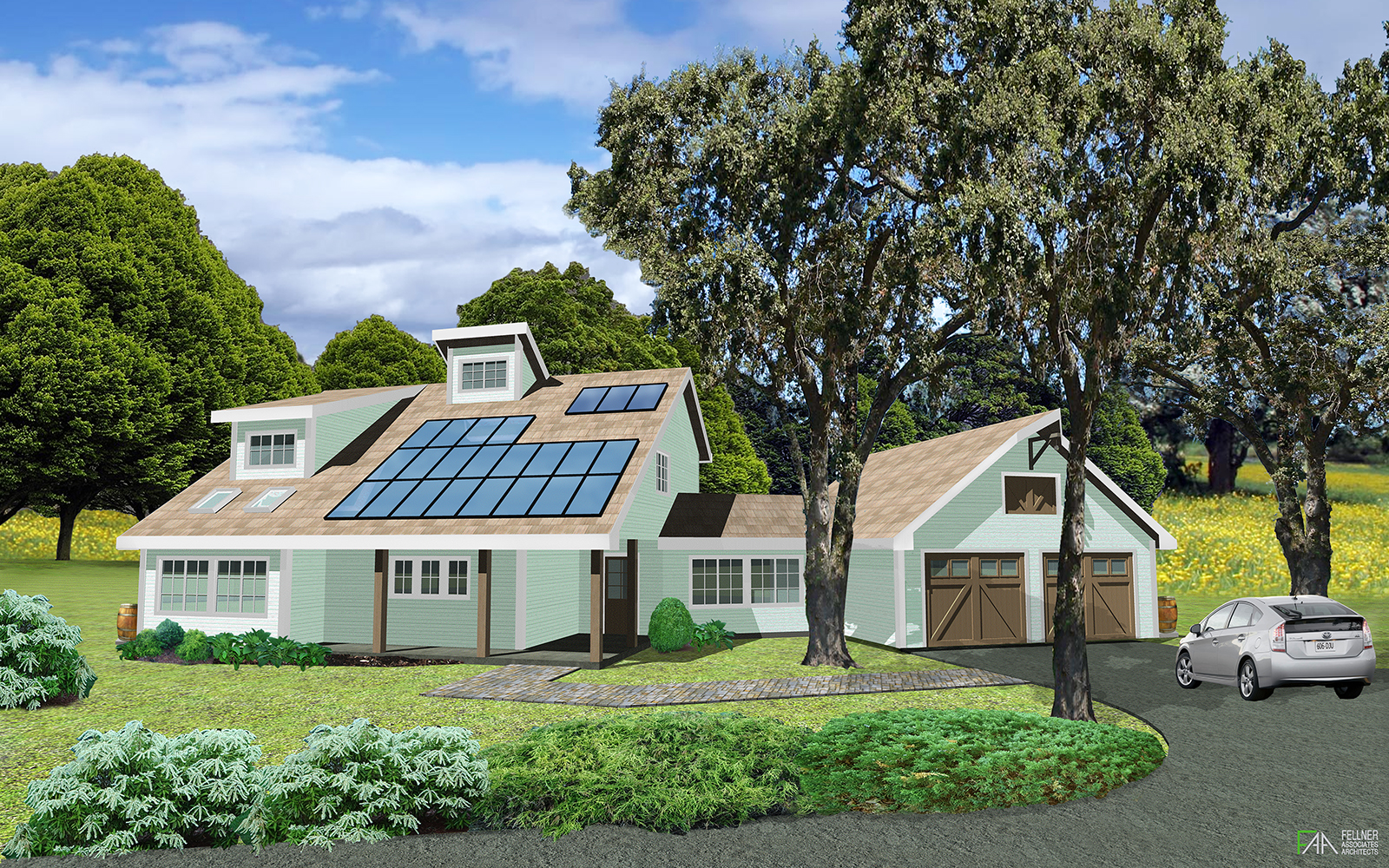Hebron House
Hebron, CT
In response to the Connecticut Zero Energy Challenge 2009, the Hebron House was designed to integrate a series of sustainability features resulting in synergies that help to create a high efficiency/high performance home. This design and build competition was sponsored by the Connecticut Energy Efficiency Fund and the Connecticut Clean Energy Fund. The 2,444 s.f. single-family house is spatially organized to be in harmony with the rural site’s natural features including rock outcroppings, trees, and orientation. Conceptually, a Contemporary Style/New England Barn hybrid with intersecting gables, shed dormers, porch, and barn details is contextually coherent with the vernacular vocabulary of Hebron, Connecticut.
The roof form represents a direct response to optimal solar orientation as well as for deflecting northern winds. The composition of a 4.6kW PV system, a solar thermal hot water system, and a passive solar sunspace with heat venting skylights utilizes the sun’s energy. The playful roof extension forming the clerestory “light catch” element provides natural daylighting which spills down through the second floor loft, stair, and the kitchen below. It also allows for natural ventilation with warm air rising and released to the exterior. The shed dormer provides light and ventilation for the second floor bedroom. Additionally, there are two tubular skylights providing natural daylighting for both interior bathrooms.
A vertical closed-loop geothermal system with ground source heat pump provides heating and cooling, as well as hot water to supplement the solar thermal hot water system. The electrical power required to operate the pumps and fans is supplied by the PV system. In turn, a heat recovery ventilator provides the required ventilation. Supplemental heat is provided by a high efficiency wood-burning fireplace with catalytic converter.
The wall envelope is covered with fiber-cement siding including an internal rain screen. Insulation is provided by closed-cell spray foam (R-37 walls and R-63 roof), effectively minimizing heat loss/heat gain and accommodating a smaller capacity 2-ton geothermal system. Windows with low-e, argon gas-filled triple pane glazing help to maintain the high performance of the envelope. Carefully designed, tightly sealed details complete the exterior’s integrity.
A rain harvesting system including both recycled oak whiskey barrels and a below-ground tank is used to provide free water irrigation of the vegetable garden and landscaping. A pervious bluestone patio allows for surface water management. Dual-flush water conserving toilets and low flow water-conserving shower heads help with water efficiency. Compact fluorescent lamps and Energy Star appliances are also implemented to minimize electrical requirements. Other strategies include re-claimed lumber for tie-beams, ceramic tiles and countertops with recycled glass, bamboo and cork flooring, bio/natural carpet, agrifiber core doors, wheatboard cabinets, and low/zero-VOC paints. Ultimately, the integrated use of renewable energy systems, high efficiency envelope, and multiple sustainable strategies help to create a high efficiency/high performance home. With a HERS rating of 19, this house is designed to reduce energy use by over 80%, compared to a standard code-complying house.
This house is one of the 20 projects that had been accepted to participate in this program. However, due to financial issues, the developer for this project did not pursue this program. Nevertheless, it can serve as a model for a sustainably designed house, exhibiting high efficiency and performance.

